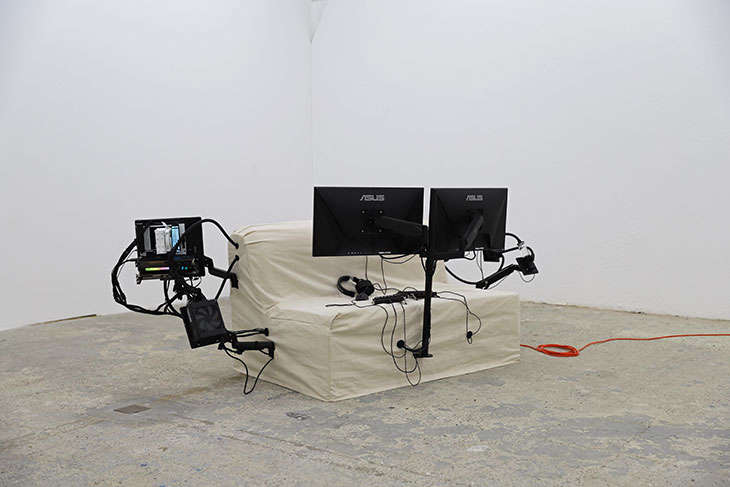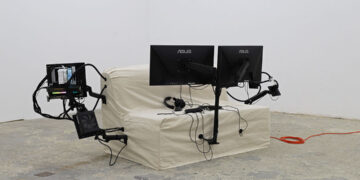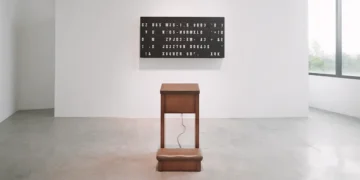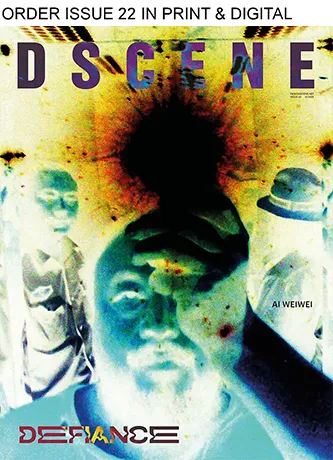
Filip Kostic‘s diverse portfolio spans various mediums, including sculpture, Twitch stream performances, video and animation, as well as games and simulation. His practice explores the ever-narrowing gap between the physical and digital realms. Kostic’s artistry frequently delves into the commodification of the self and the utilization of our perceptions of selfhood and subjecthood by various platforms to generate novel possibilities for capital accumulation.
ART
A multi-dimensional experience existing in various contexts at once, Filip’s works can be experienced as installations or sculptures within exhibition spaces or as digital works accessible through online streams, social media, video games, and simulations.

Where does your interest in the internet and gaming subcultures come from? – I grew up in these gaming communities and online subcultures—though it feels like most people my age did. I was extremely online (both on games and social media) throughout middle and high school. I was on Myspace during its peak and made custom html layouts for friends. I hopped across platforms before we really thought of them as such, and I farmed currency on World of Warcraft and sold it for cash before crypto was a thing. The internet felt expansive when I was growing up, and games and “online” were really an integral part of my and my friends’ lives in ways that feel less nefarious than they are now. I guess I was becoming online as the internet was shifting from the personal blog hyperlinks era to the data farming insular platform capitalism era we are in now, and that definitely colored my perspective of what the internet could and should be. That shift interests me, specifically how it frames our understanding of labor and identity.
I was also, as many of us were, the most online I had ever been in my life during the early pandemic. My friends and I were shitposting into what we thought was the void, only to find it resonated with a lot of people. It was really just a group of friends online, riffing with images and jokes back and forth but posting every iteration to an audience that kept growing–it felt like that nascent pure internet again for a moment. It felt like nothing we did really mattered, but also like we were somehow steering this ship of meme culture towards something that felt like truth and meaning… Truly the biggest cure to nihilism was to “make meaningful images.” I think back to this period in the same way I think back to the early internet and gaming when I was a kid: It felt hopeful and transgressive; it felt meaningful and new. And the fact that this kind of thing can happen in a group chat on some shitty app makes me incredibly happy.

In what ways does your engagement with the gaming industry inform your artistic practice? – In so many ways–some are more obvious to me than others, but it feels like they are inexorably entangled with one another. For a large portion of the pandemic, I had moved out of my studio and started working on my art and my job out of my bedroom, from the same chair, on the same computer. The line between the studio and my job was already blurry as I usually work with the same software for both, but this was a total collapse and was where my project Bed PC came from.
Much of the work I do in the gaming and entertainment industry is, by necessity, a non-critical engagement with the same software and ideas that my artwork is connected with. The gaming industry, alongside the development of computer hardware, is concerned with creating a more accurate representation of the world with each iteration of updates. I am very interested in this notion of representation in the most literal sense, the question of “what does it take to effectively trick an audience into thinking that this is real?” It takes a lot of rare metals, a really fraught (an understatement) labor pipeline, a myriad of political infrastructural relationships between large corporations and nations, and a lot of good PR, to name a few specifics. Many of my computer sculptures are about making computing cumbersome and physicalized–I want the whirring of the fans to be felt and heard, the heat of the transistors working on rendering an image to heat the room around it. Rendering a simulation at 60 frames a second is a process of energy transfer.
Online culture is at a very specific point of saturation that feels both uninhibited and like it can’t hold itself up, and gaming is squarely within that. There is also a feeling that the line between consumer and “player” no longer exists and that perhaps gamification can be applied to all parts of online existence, from watching shows (Bandersnatch) to scrolling the feed (reward cycles) to even voting.
I’m also invested in exploring the impact that gaming, or more broadly, the entertainment industry, has on culture and the ways in which we, as individuals, are then positioned to exist within it. Online culture is at a very specific point of saturation that feels both uninhibited and like it can’t hold itself up, and gaming is squarely within that. There is also a feeling that the line between consumer and “player” no longer exists and that perhaps gamification can be applied to all parts of online existence, from watching shows (Bandersnatch) to scrolling the feed (reward cycles) to even voting. I often joke with my friends that in a few years, we will all vote for public officials and policy through a meta app like Instagram or, more likely, on Fortnite. But really, that is a fascinating spot to be in culturally. The idea that categorically, we as a public can be thought of as a player, a consumer, or a content creator at the same time interchangeably in many contexts without materially shifting our position feels crucial in constructing the contemporary social condition.

Could you please elaborate on the genesis of your ongoing project, Personal Computers? – I made a book in 2022, Personal Computers, that really started because I showed my friend an archive of images of people’s computer builds that I had been collecting for years, and she told me to make a book out of it. But I am now thinking that maybe Personal Computers can be used to describe an ongoing practice or a way to frame the other work I am doing with computers, like the Bed PC. I spend a lot of time with my computer, so it feels appropriate to think about it as not just a tool but an aesthetic and even spiritual object.
This practice of incorporating computers in sculptures or thinking about computers as sculptures come out of this genuine love for my computer. There is a fascinating 30+ year history and genealogy of formal language developed by Computer Modders that is being (unknowingly perhaps) referenced by contemporary sculptors today. I find myself looking at these computer builds posted to modder forums and thinking this is better than most sculptures I see in contemporary art spaces. They are endlessly inspiring.
I have always felt like the digital/physical distinction is a false dichotomy in that it is hard for me to imagine something that is not inadvertently affected by the existence of digitality.
The current era appears to be dominated by the rise of artificial intelligence. What are your reflections on the growing connection between the digital world and our everyday lives? – It is really hard to speak about such rapidly developing technology as AI. You either get lucky and make an insanely accurate assessment, or two months from now, it is dated and silly… I have always felt like the digital/physical distinction is a false dichotomy in that it is hard for me to imagine something that is not inadvertently affected by the existence of digitality. It feels like a fundamental framework through which to understand the contemporary condition.

Would you let AI do the work for you?- Yes, totally! I have already. I’ve used chatGPT to help me write portions of code for projects and to help me start writing bureaucratic proposals. It’s super useful and will probably continue to make its way into the way I work. I think that Photoshop released an update while I was answering these questions that let you do image prompts in the software itself; that seems useful!
What do you always have next to your computer? – I have a lot of computers, and each one has a sort of different…”situation.” But I am looking at my computer at home right now, and there is a tea cup that has probably been sitting there for longer than it should, some motion capture gloves, an empty glass, my wallet and keys, my deodorant, and a THC balm.
View this post on Instagram
Tell us about your work presented at the Day Before Tomorrow exhibition. – The piece Couch Computer, 2023, is part of a series that started with the Bed PC project in 2021, in which I turn all of my furniture into working computers. Originally, the project started because of a frustration with my circumstances at the time, combined with a childlike desire to make what I thought was the coolest computer. The Couch Computer is an optimization of the couch. It further examines the tension between the contemporary laborers’ private life and work life collapsing in late-stage capitalism by using “Good Screen/Bad Screen,” the memetic bastardization of the psychoanalyst Melanie Klein’s Object Relations theory, as a point of orientation. In the sculpture, I put the good screen and the bad screen up against each other with the hope that a secret third screen—the transcendental screen—will emerge.
What happens the day before tomorrow? – On the day before tomorrow, we are acutely aware that there is more we can do, but we are content with where we are, and there is always tomorrow!
DSCENE Magazine joined forces with the esteemed Eugster II Belgrade gallery for a group exhibition entitled “DAY BEFORE TOMORROW.” Curated by the visionary talent of Vuk ?uk, this also marks his curatorial debut, showcasing a remarkable group of artists, including the likes of Lyn Liu, Eva Papamargariti, Zarina Nares, Filip Kostic, Damien H. Ding, and Vuk ?uk himself.
DSCENE issue 19 is out now in digital – shop now.



















